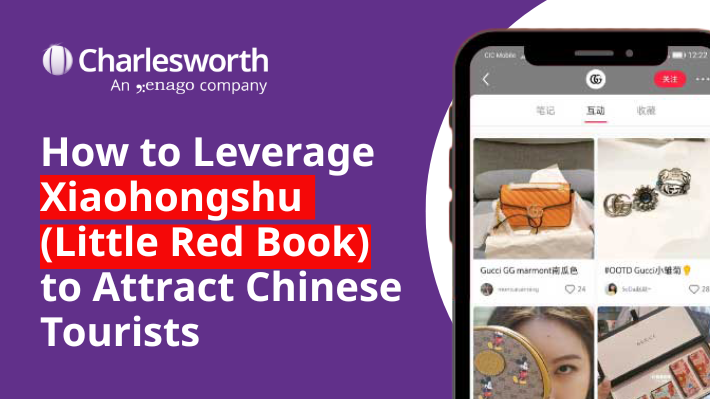How to Leverage Xiaohongshu (Little Red Book) to Attract Chinese Tourists

In recent years, the Little Red Book or RedNote, also known as Xiaohongshu (小红书), has emerged as one of China’s most influential social media platforms. With over 200 million active users, it has evolved from a niche platform for sharing product reviews and lifestyle tips into a major tool for brand marketing and tourism. For global businesses aiming to attract Chinese tourists, leveraging Little Red Book offers a unique opportunity to reach a highly engaged audience with high purchasing power and a keen interest in travel and exploration.
Understanding Xiaohongshu (Little Red Book)
Little Red Book, founded in 2013, combines the best features of social media, e-commerce, and content creation. Often referred to as China’s version of Instagram, the platform allows users to post photos, short videos, and reviews of products, destinations, and experiences. Little Red Book’s user base is predominantly made up of young, affluent Chinese consumers, with a particular focus on Gen Z and millennial users who are highly influential in shaping trends in China.
What sets Little Red Book apart from other social media platforms is its emphasis on authentic content. Users often share genuine experiences, from detailed product reviews to travel diaries, and this trust-based content is crucial in attracting Chinese tourists. Brands that understand the platform’s culture of peer recommendations and user-generated content can unlock significant opportunities for marketing to Chinese tourists.
The Power of Peer Influence
One of the reasons Little Red Book is so effective in engaging Chinese tourists is its reliance on peer recommendations. In China, word-of-mouth is a powerful tool that significantly impacts purchase decisions, and the same principle applies to travel choices. Tourists looking to travel abroad often seek recommendations from their peers, influencers, and key opinion leaders (KOLs) who have firsthand experiences. Little Red Book’s format, which prioritises user-generated content, means that potential tourists are more likely to trust the content shared by fellow travellers rather than conventional advertisements or promotional posts.
Chinese tourists today are more discerning than ever. They are no longer interested in simply visiting well-known tourist hotspots but are increasingly seeking authentic and unique travel experiences. Little Red Book offers the perfect platform for showcasing hidden gems and off-the-beaten-path destinations that might otherwise be overlooked by traditional marketing channels.
Influencer Marketing and KOLs
Influencer marketing plays a significant role in shaping the decisions of Chinese travellers. Little Red Book boasts a vast network of influencers and KOLs who have the power to sway consumer behaviour. These influencers, who often share their travel experiences through personal stories, photos, and reviews, are seen as credible sources of information. Their followers trust their opinions, making them valuable partners for global brands looking to attract Chinese tourists.
For instance, International Hotel Chains like Marriott and Four Seasons have collaborated with KOLs to promote their luxury accommodations in popular destinations like Paris, Tokyo, and London. Through travel stories, influencer-created content, and behind-the-scenes posts, these hotel brands have successfully tapped into the growing demand for luxury travel experiences.
The Role of Content Strategy
To successfully attract Chinese tourists through Little Red Book, global brands need to develop a content strategy that resonates with Chinese consumers. It is not enough to simply translate existing content into Mandarin; the approach needs to be culturally relevant and tailored to the preferences of the Chinese market.
Here are a few content strategies that can help businesses capture the attention of Chinese tourists on Little Red Book:
- Storytelling and Visual Appeal: High-quality, visually compelling content is key on Little Red Book. Posts that tell a story, whether it’s about the history of a destination or the experience of visiting a new place, tend to perform better. Stunning photography, video diaries, and user-generated content can help to create an immersive experience that entices potential tourists.
Example: National Geographic frequently uses Little Red Book to share breathtaking photographs from around the world, featuring unique destinations and once-in-a-lifetime experiences. These posts often include a blend of narrative storytelling and visuals that tap into Chinese travellers’ growing desire for adventure and exploration.
- Engagement and Community Building: Little Red Book thrives on community engagement. Businesses should aim to create content that encourages interactions, such as asking followers to share their experiences, leave comments, or even post their own content. Running contests, offering discounts, or asking users to share their travel memories can boost visibility and engagement.
Example: Airbnb has seen success on Little Red Book by engaging their audience through user-generated content. They run campaigns where users share their Airbnb travel stories, showing off unique homes and experiences from around the world, encouraging engagement and inspiring future travellers to book through the platform.
- Utilising Hashtags and Trends: Hashtags play a critical role in Little Red Book’s discovery algorithm. Brands should research trending hashtags relevant to travel, destinations, and experiences, using them to increase the visibility of their posts. Additionally, staying on top of platform trends and aligning marketing efforts with popular topics will help businesses maintain relevance and visibility.
Example: H&M uses popular fashion and travel-related hashtags on Little Red Book to increase engagement. When releasing a new collection inspired by global trends, the brand will pair the release with travel-specific hashtags like #TravelStyle or #CityBreak to connect with users looking for vacation clothing options.
- Leveraging Little Red Book’s E-commerce Features: Little Red Book’s integration of social media and e-commerce makes it easier for brands to showcase their products and services to potential tourists. By incorporating “buy now” links in posts or partnering with influencers to promote specific products, businesses can drive immediate sales and interest from Chinese consumers. For tourism-related businesses, offering exclusive promotions or travel packages can make a destination even more appealing.
The Growing Demand for International Travel
As the Chinese middle class continues to grow and travel restrictions ease globally, the demand for international travel has skyrocketed. Chinese tourists are known for their substantial spending power, with high-net-worth individuals keen on luxury experiences, while younger travellers are more inclined towards unique, authentic experiences abroad. Little Red Book’s active user base makes it an ideal platform for brands aiming to tap into this lucrative market.
In addition, many Chinese tourists are more digitally savvy than ever before. They use social media platforms like Little Red Book to plan trips, research destinations, and seek recommendations. As a result, having a presence on the platform and cultivating a strong digital reputation is no longer optional for global brands looking to attract Chinese tourists — it’s a necessity.
Conclusion
Little Red Book is an invaluable tool for global brands seeking to engage Chinese tourists. With its strong emphasis on peer recommendations, influencer marketing, and high-quality, authentic content, it offers a unique way to tap into the growing market of outbound Chinese travellers.
For brands seeking to grow and attract Chinese tourists, Charlesworth can help in expanding your presence on platforms like Little Red Book and other Chinese social media channels, ensuring effective engagement and growth in this dynamic market.


